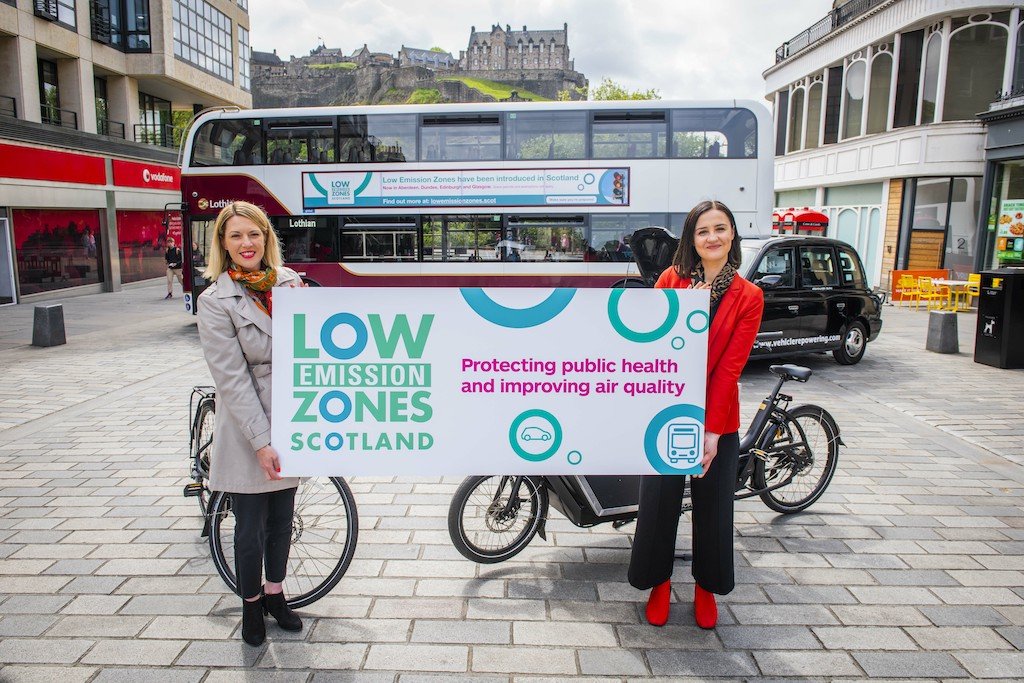Plan agreed for LEZS in Scotland’s largest cities
Low Emission Zones (LEZs) to protect public health and improve air quality have now been formally introduced across Edinburgh, Glasgow, Dundee and Aberdeen. Plans have been agreed by local authorities and Scottish Ministers, and grace periods set in place until enforcement commences.
In Glasgow, the LEZ already applies to buses. For other vehicle types, enforcement commences on 1 June 2023 and 1 June 2024 for residents within the zone.
Edinburgh and Aberdeen will commence enforcement on 1 June 2024, and Dundee will enforce from 30 May 2024.
LEZs set an emissions limit for certain road space, restricting access for the most polluting vehicles to improve air quality.
Vehicles that do not meet the emission standards set for a Low Emission Zone will not be able to drive within the zone. A penalty charge will be payable by the registered keeper of a vehicle when a non-compliant vehicle enters the LEZ.
The minimum emission standards for vehicles permitted within the four LEZs are Euro 4 for petrol cars and vans (generally vehicles registered from January 2006) and Euro 6 for diesel cars and vans (generally vehicles registered from September 2015).
A number of vehicles are exempt from LEZ requirements, including any vehicle driven by a blue badge holder. Funding is also available to help people and businesses comply with Low Emission Zones.
Welcoming the introduction, Minister for Transport Jenny Gilruth said “The introduction of Low Emission Zones is a truly significant public health moment for Scotland. Our air quality is generally good – but for too long air pollution has exceeded legal limits for health in our city centres as a consequence of unrestricted vehicle emissions.
“We have a moral responsibility to act. Air pollution often disproportionally impacts those with the least in our society. It causes the most damage to the youngest, the oldest and those with pre-existing medical conditions. LEZs are the biggest change we’ve ever seen in how vehicles will access our cities – and they need to be, in order to best protect public health and improve air quality.
“With a year to go until the earliest point of enforcement in Glasgow and two years to go until enforcement in Edinburgh, Dundee and Aberdeen, I encourage everyone to visit www.lowemissionzones.scot to find out more about the schemes, including the Scottish Government funding on offer.”
John Bynorth, who leads Scotland’s Clean Air Day for Environmental Protection Scotland, commented, “Outwith the LEZs, we would also expect to see potential benefits to the surrounding areas as people consider their travel options and consider cycling or walking instead of taking the car.
“This will lead to improvements in the health of people who live, work and go to school in these cities and make them cleaner and more sustainable as they strive to achieve net-zero climate change targets in the coming years.”
Neil Leckie, Senior Programme Manager at the Energy Saving Trust added, “The expansion of Low Emission Zones in Scotland’s major cities will play a key role in improving air quality and in the transition to a net zero carbon society. The zones will encourage the use of low carbon transport and active travel, and available funding to prepare for the changes will support the individuals and businesses who need it most.”

